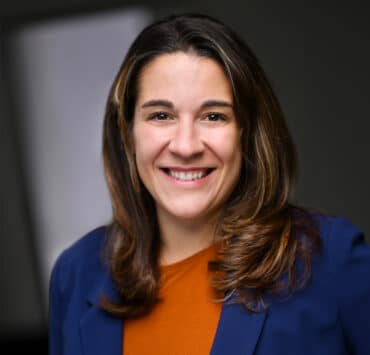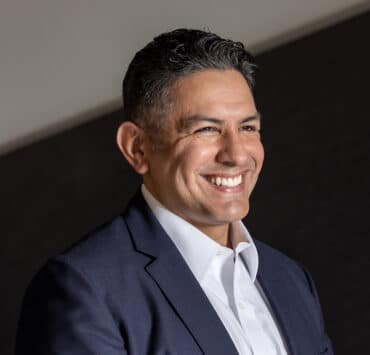|
Getting your Trinity Audio player ready...
|
Marc Booth is not a lawyer, but after fifteen years of what he calls “hard-wired, on-the-job training,” he knows enough about patent law to be “dangerous.” Today, as chief intellectual property officer at Acacia Research, he and his team have become experts in determining whether a patent is worth acquiring, licensing, or litigating.
Booth never imagined he’d end up parsing patents. A hands-on kind of guy, he parlayed a BS in physics and a master’s in electrical engineering into designing circuit boards and software at Hughes Aircraft but was soon kicked up to management. Eight years at Sony, plus stints at hardware and software start-ups, honed his ability to manage a product’s story from idea to development to quality assurance.
When Booth was invited to join Acacia in 2006, he knew nothing about patents. In fact, he thought “nothing could be more boring” but quickly changed his mind when he bought some patent law books and saw how companies could leverage tech knowledge. At the time, Acacia was already doing quite a few licensing deals without litigation (i.e.,”soft licenses”), but the threat of declaratory judgments loomed. As Acacia grew as a public company, pressure for higher revenues increased.
“What makes a patent portfolio more interesting and easier to license is the story behind the invention.”
Marc Booth
After the Leahy–Smith America Invents Act (AIA) passed in 2011, it became much more difficult to litigate the patents in Acacia’s portfolios, and one expensive portfolio cratered. In 2015, Acacia’s CEO resigned, and in 2017, Booth left for a year. After a board shake-up in 2018, the company brought Booth back to run the IP group.
Today, Booth and his team license existing portfolios and acquire new patents, with a focus on consumer electronics, telecommunications, semiconductors, and, occasionally, industrial automation. Acacia receives hundreds of interested patent partners a year; it also actively seeks out partners.
Deals can range from straight partnerships to licensing contracts in the multi eight figures. (The average is around single-digit millions.) Some patent owners want to sell outright to remain anonymous; others don’t want to be hassled by litigation. Some simply want to partner and share in the back-end proceeds.
“While Marc is an excellent manager and team motivator, he also has the technical chops to roll up his sleeves and dig into even the most complex patents, which gives him tremendous credibility in licensing negotiations,” says Jeff Bragalone, a shareholder at Bragalone Olejko Saad.
Booth explains how Acacia’s work differs from that of patent lawyers. “A patent lawyer is mostly interested in what is claimed and its quality,” says Booth. “Of course, we’re interested in that as well. But what makes a patent portfolio more interesting and easier to license is the story behind the invention. Who developed it? What problems were they trying to solve? Were they part of an R&D group in a race to solve a particular problem? Simply, are they pioneers?”
“The reason litigation happens is because patent owners have high expectations and those who owe them royalties want to pay as little as possible.”
Marc Booth
Booth readily admits that most patent owners do not have licensable patents. Since the cost of licensing and litigation, which Acacia absorbs with the help of outside counsel, is so expensive, the recoveries must justify the effort. Also problematic are poorly written patent claims. Most problems, though, boil down to patent quality and market size. “If somebody comes in with an interesting invention that will only generate $100,000 in royalties, it’s not worth taking on because it may cost a million or two to prevail at litigation.”
Booth is discreet about past portfolios but admits the company is excited these days to license the patents from Korean-owned Newracom, the fifth largest standard essential patent portfolio in the Wi-Fi 6 space (behind Qualcomm, Huawei, Intel and LG). They are approaching their first deal and have already filed three lawsuits.
According to Booth, one of the biggest problems with the patent industry lies in the government. The US Patent Office budgets only a certain amount of time to examine each patent, so it doesn’t perform thorough examinations. As a result, a lot of bad patents get issued. Unfortunately, owners think they have a valuable patent, only to get clobbered later in litigation and lose it.
But Booth also notes the irony here. Another department of the patent office—the Patent Trial and Appeal Board (PTAB)—takes pains to investigate challenged patents rigorously at the request of the defendant and often invalidates them. On top of that, the patent office is incentivized to continue to grant patents because they generate revenue through maintenance fees. “That just seems so wrong to me,” Booth says. “But I think we can all agree that if bad patents weren’t issued to begin with, we wouldn’t have the problem.”
To counteract some of these challenges, Acacia has recently initiated a special program for start-ups that lack the resources to hire high-priced law firms. With an eye for legitimate invention, Booth’s team can spot issues before they end up in litigation. To alleviate the initial financial burden, Acacia offers to take any future patents to market via right of first refusal. Another option is equity in the start-up. “Either way, we bring a service to ensure that the patents, present and future, are as valuable as they can be.”
These days, Acacia’s board has mandated Booth’s team to do more licensing, less litigation. “The reason litigation happens is because patent owners have high expectations and those who owe them royalties want to pay as little as possible. If the two sides could just come closer together with prices both agree on, we could facilitate a much more efficient marketplace. That’s the real issue, but of course it’s not an easy thing to do at all.”
Nelson Bumgardner Conroy PC:
“Marc is smart, motivated, accessible, and honest. You can’t ask for more than that from a client.”
–Ed Nelson III, Attorney

